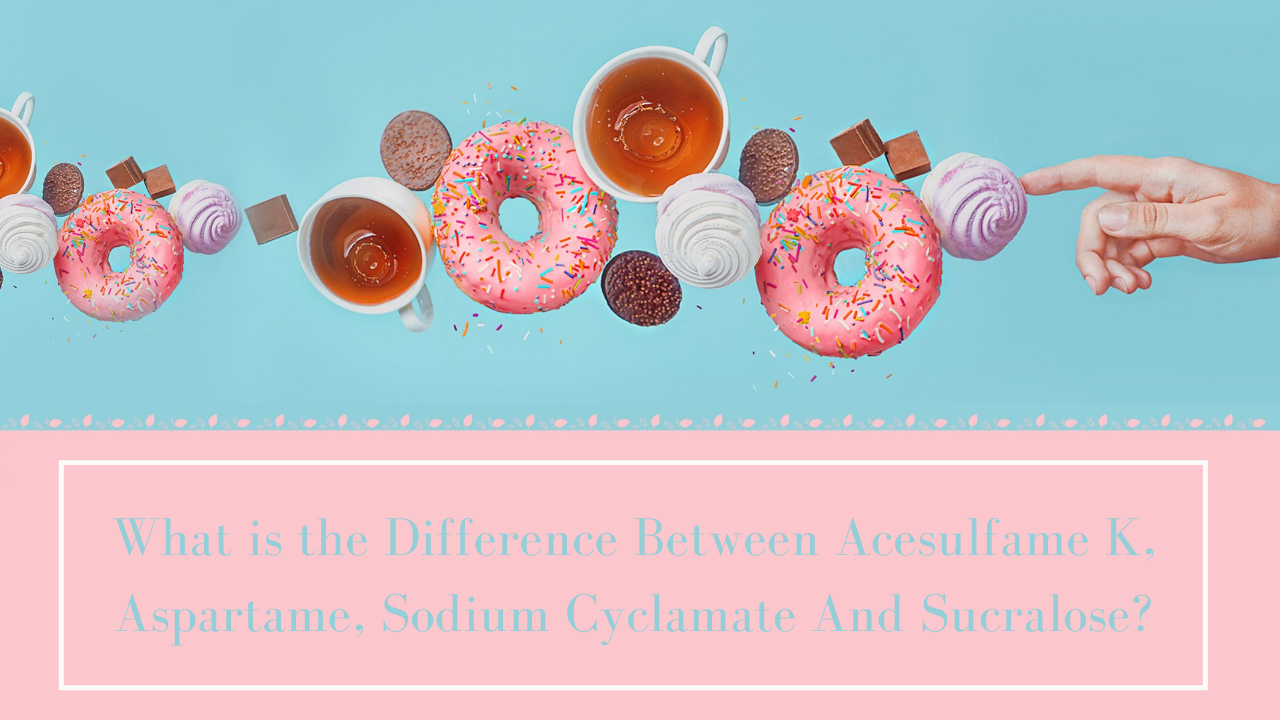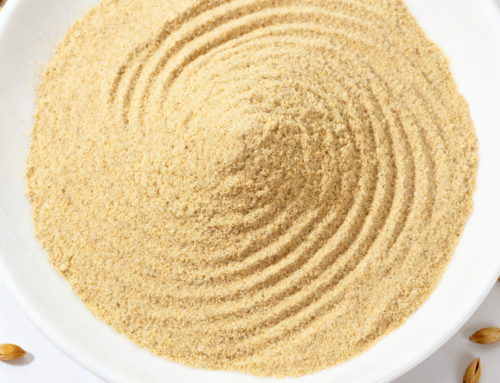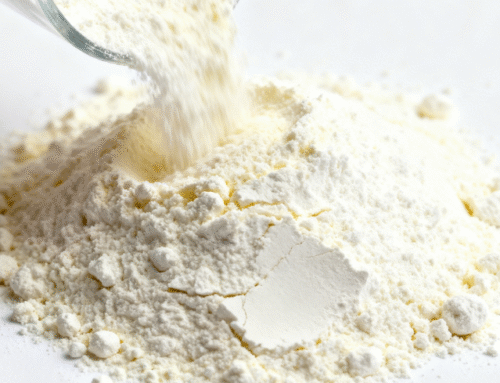Sweet food is a temptation that many people cannot escape. If you want to eat and are afraid of getting fat, “no sugar” and “0 sugar” products have become the favorite of many consumers. But 0 sucrose is not equal to 0 sugar. The reason why many foods known as “0 sugar” can still be so delicious, the mystery lies in the various sweeteners in the ingredient list. Among the most common sweeteners are acesulfame K, aspartame, sucralose and so on.
Today, the editor of Xi’an Herb Bio will focus on introducing the representative of the fourth-generation synthetic sweetener “Acesulfame”. Let everyone know what exactly is Acesulfame? Is it harmful to the human body? And the difference between Acesulfame K and Aspartame, Sodium Cyclamate , Sucralose, etc.
Ⅰ. Description of sweeteners
Sweeteners are non-sugar substances that can make food sweet, and are widely used in the food industry as a large class of food additives. Sweeteners can be divided into natural sweeteners and artificial sweeteners according to their sources. According to its chemical structure and properties, it can be divided into sugar and non-sugar sweeteners.
Generally speaking, sweeteners with a calorific value similar to that of sucrose are called energy sweeteners or caloric sweeteners. Sweeteners with a calorific value lower than 2% of the calorific value of sucrose at the same sweetness as sucrose are called non-energy sweeteners or non-calorie sweeteners.
Non-energy sweeteners are all high-power sweeteners, but they are not metabolized and absorbed by the human body and contain no calories. Therefore, non-energy sweeteners are getting more and more attention.
The “Acesulfameil” we focus on today is a non-energy sweetener.
Ⅱ. What is Acesulfame?
In 1967, Acesulfame K was first discovered by the German Hearst company. The chemical name of Acesulfame was 6-methyl-1,2,3-oxadia-4(H)-ketone-2,2-dioxide. Potassium salt, also known as acesulfame potassium and AK sugar, has a molecular formula of C4H4KNO4S.
The sweetness of Acesulfame is 200-250 times that of sucrose. It has no nutrition, no calories, no metabolism or absorption in the human body. It is an ideal sweetener for middle-aged and elderly people, obese patients, and diabetics.
Acesulfame K is considered to be one of the most stable sweeteners in the world, and it is widely used in various foods. Acesulfame can not only be used alone, but also has a synergistic effect with other sweeteners, and the sweetness is better when combined with sorbitol. In addition to food, it is also used in medicines, cosmetics, etc. to mask the bitter taste of certain components.
Authoritative organizations such as the World Health Organization, the U.S. Food and Drug Administration, and the European Community have determined that “Acesulfame K is safe and harmless to humans and animals” after 15 years of investigation.
It was first approved in the UK in 1983; in 1988, the U.S. Food and Drug Administration approved the use of acesulfame in foods with a daily intake of 0-15 mg/kg.
China approved Acesulfameil for food, medicine and cosmetics in 1992. With the continuous improvement of the domestic production level of Acesulfame, the application range in food processing has become wider and wider, and a larger proportion of exports have been obtained.
Encyclopedia of Acesulfame
Function: Sweetener
CNS number: 19.011
INS number: 950
Source: It is prepared by addition reaction of tert-butyl acetoacetate and fluorosulfonyl isocyanate, and then reacting with potassium hydroxide.
Properties: White crystalline powder, odorless, easily soluble in water, hardly soluble in organic solvents such as ethanol, and no clear melting point. It has a strong sweetness, the sweetness is 100 to 200 times that of sucrose, the taste is good, and there is no unpleasant aftertaste. It is very stable to light, heat and acid, and will decompose only when it is slowly heated to 225°C. Does not absorb moisture in the air. It has good compatibility with sugar alcohol and sucrose.
ADI value: 0~15 mg/(kg·d) (FAO/WHO, 1990).
Ⅲ. Is Acesulfame harmful to the human body?
For everyone’s concern, whether Acesulfame is harmful. The State Food and Drug Administration once authoritatively explained that the rational use of Acesulfame in accordance with the standards will not cause harm to human health.
According to the “National Food Safety Standard Food Additives Use Standard” (GB2760-2014), Acesulfame K can be widely used in various foods such as frozen drinks, canned fruits, jams, preserves, pickled vegetables, processed edible fungi and algae. But in fruits and its products, Acesai honey is only allowed to be used in jams and preserved fruits (only candied fruits), and the maximum allowable amount is 0.3 g/kg.
GB2760-2014 stipulates the allowable food categories and maximum usage amount of Acesulfame as a sweetener. These are determined under the premise of strict risk assessment and safety assurance, and they are basically the same as those permitted in other countries.
On the other hand, Acesulfame K was listed as a Grade A food additive by the FAO/WHO Joint Expert Committee on Food Additives (JECFA) in 1983, and recommended an average daily intake (ADI) of 0-15 mg/kg. Acesulfame is not metabolized or accumulated in the human body, and 100% is excreted from the body in the urine as the original substance.
Therefore, the use of Acesulfame in strict compliance with the standards will not cause harm to the health of consumers.
Ⅳ、The difference between Acesulfame and Aspartame, Sodium cyclamate, Sucralose
ⅰ. What is Aspartame?
Aspartame is a dipeptide sweetener, its chemical name is aspartame, which is composed of L-phenylalanine (or L-methylphenylalanine ester) and L-aspartic acid Prepared by chemical or enzymatic reactions.
Aspartame is a white crystalline powder, and its sweetness is 180 times that of sucrose. Because of its high sweetness, the amount added in actual use is very small, and the energy value provided by it per person per day is very low or almost zero. It can be hydrolyzed into aspartic acid, phenylalanine and methanol in the body.
Aspartame was invented by Schlatter of the United States in December 1965. Aspartame began industrial production in the late 1980s. Because aspartame has poor heat resistance, it is mainly used in carbonated beverages, fruit juices, instant coffee, wine, pastries and other foods.
Aspartame contains phenylalanine, which is not good for children with phenylketonuria. According to statistics, one in every 10,000 to 20,000 newborns is a patient with phenylketonuria. The disease is a hereditary disease. The content of phenylalanine converting enzyme in the liver cells of the patient is only 1/4 of the normal person. It cannot convert phenylalanine into tyrosine, thus accumulating a large amount of phenylacetone in the blood and urine. Acid, which in turn endangers the brain. Therefore, foods containing aspartame should carry warning signs. The stability and safety limit the use of aspartame.
ⅱ. What is Sodium cyclamate sweetener?
The chemical name of sodium cyclamate is cyclohexyl sulfamic acid, the molecular formula is C6H13NO3S, which is formed by sulfonation of cyclohexylamine C6H11NH2, and its sweetness is 50 times that of sucrose.
Sodium cyclamate sweetener was discovered in 1937 by Michael Sveda, a graduate student at the University of Illinois in the United States, and was approved by the FDA in 1949 and officially put on the market. It was put into industrial production in 1960. In 1986, the Chinese Ministry of Health approved sodium cyclamate sweetener as a food additive.
However, the carcinogenic effect of sodium cyclamate (mainly its sodium salt Sodium Cyclamate) is a representative and controversial issue.
In the 1970s, some scientists questioned that cyclamate is related to the formation of bladder cancer. Although this result has not been verified, it has changed the development trajectory of cyclamate. Since then, the US market no longer allows cyclamate as a food additive , The European Union has set a limit on the dosage of sodium cyclamate, and the allowable daily intake is 7mg/kg. The Chinese national standard GB2760-2014 regulates the amount of sodium cyclamate added to various foods.
ⅲ. What is Sucralose?
The chemical name of sucralose is 4,1’,6’,-trichloro-4,1’6’-tideoxygalactosucrose, the molecular formula is C12H19Cl3O8, and its sweetness can reach 400 to 800 times that of sucrose.
Sucralose is a white powdery product jointly developed by Taylor and the University of London in the 1970s and applied for a patent in 1976. It does not participate in metabolism in the human body, and its calorie value is zero. It is an ideal sweet substitute for diabetic patients and one of the best functional sweeteners at present.
Sucralose was recognized by the World Health Organization (WHO) and the United Nations Food and Agriculture Organization (FAO) Joint Expert Committee on Food Additives (JECFA) in 1990 for its food safety as “Generally Recognized as Safe (GRAS)”.
In 1991, Canada was the first to approve the use of sucralose, and the U.S. Food and Drug Administration approved sucralose as a food additive on March 21, 1998. China began to allow it to be used as a food additive in 1997.
At present, more than 120 countries around the world have approved sucralose for use in food, health products, medical and daily chemical products. The Food Additives Joint Expert Committee of the United Nations Food and Agriculture Organization of the United Nations and the World Health Organization identified sucralose as an A-level food additive “Generally Recognized as Safe (GRAS)”.
ⅳ. Acesulfame and Aspartame, Sodium Cyclamate, Sucralose comparison, which is safer?
– From the perspective of safety, the safety of acesulfame K and sucralose are relatively good, and the safety of aspartame has been questioned.
– From the standpoint of stability, aspartame is used in neutral to alkaline products, the sweetness will be reduced, or even lose the sweetness, this problem will easily occur when heated at high temperature for a long time. Acesulfame K and sucralose performed much better in this regard.
– From the perspective of solubility, aspartame needs to be heated or under high-speed stirring conditions to dissolve.
Acesulfame and sucralose have maintained steady growth in the research and development of new products in the beverage market. From the perspective of the global new beverage research and development market, acesulfame K and sucralose have maintained a steady growth trend in beverage products, and the use of aspartame has declined.
The above is the knowledge of acesulfame, aspartame, sodium cyclamate and sucralose compiled by the editor of Xi’an Herb Bio. We hope that through the introduction of this article, everyone will have a deeper understanding of these four sweeteners.
Xi’an Herb Bio can provide you with high quality and the best price of Acesulfame K, Aspartame, Sodium Cyclamate and Sucralose. Please contact us for more detailed information. If you have friends who also interested in these products, please recommend us to them.






Leave A Comment